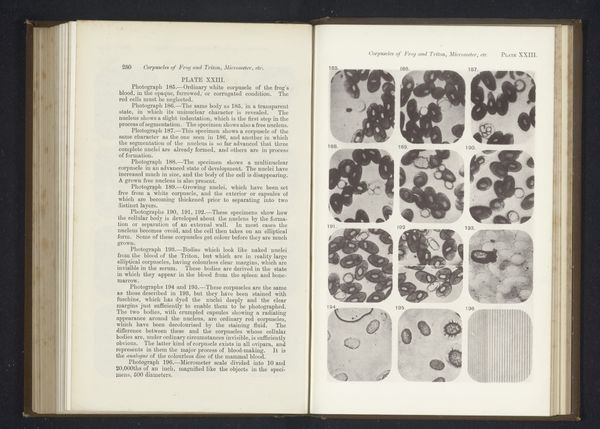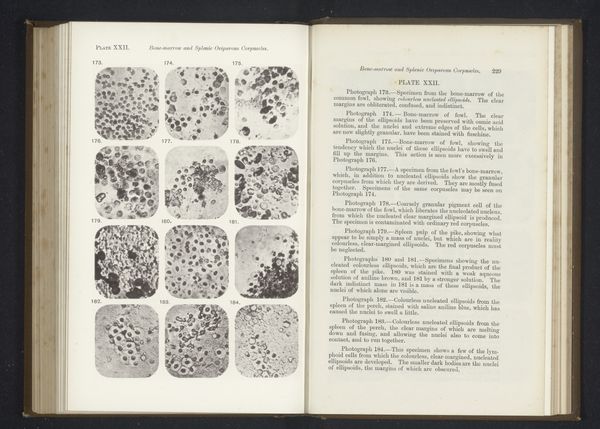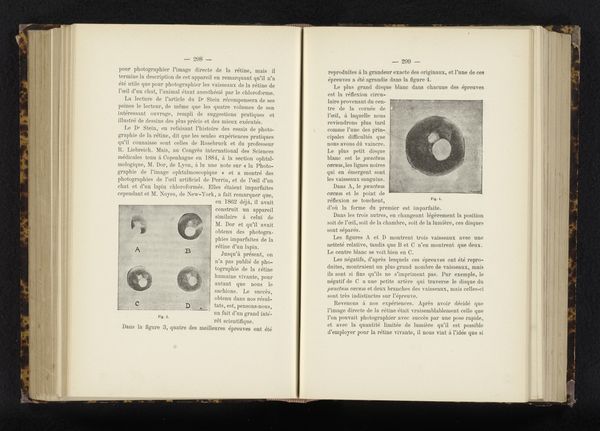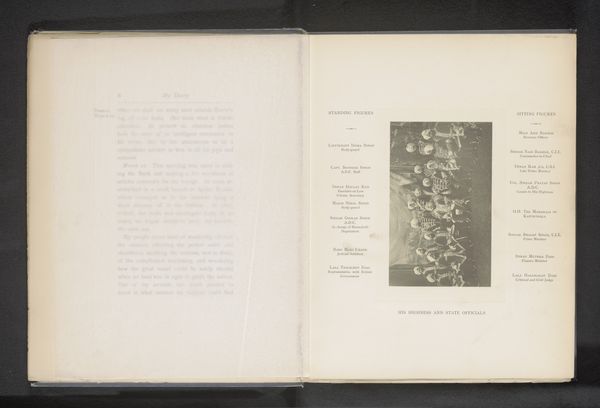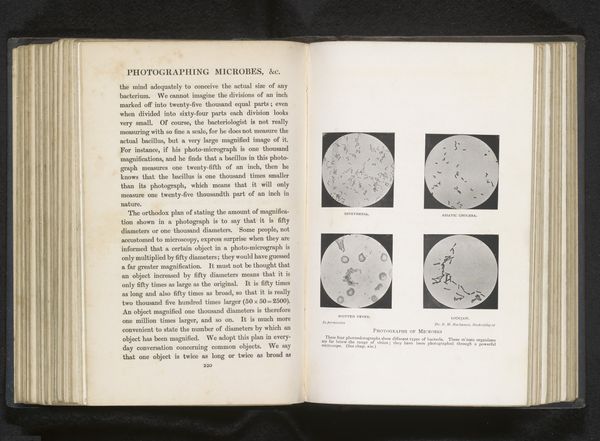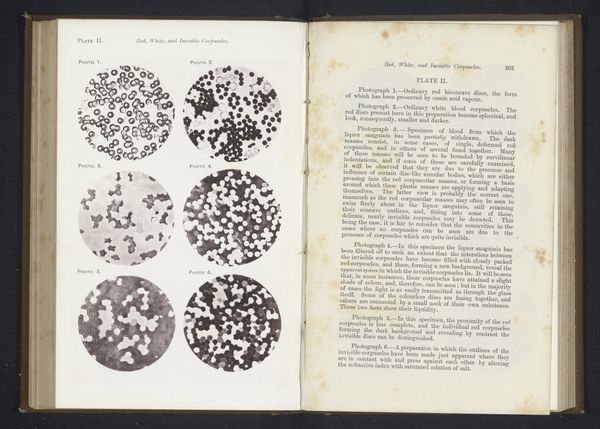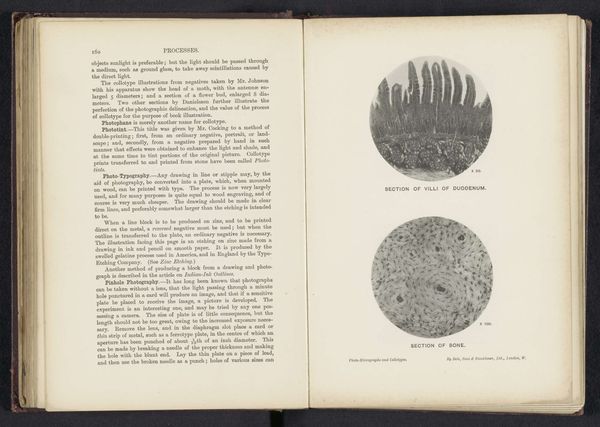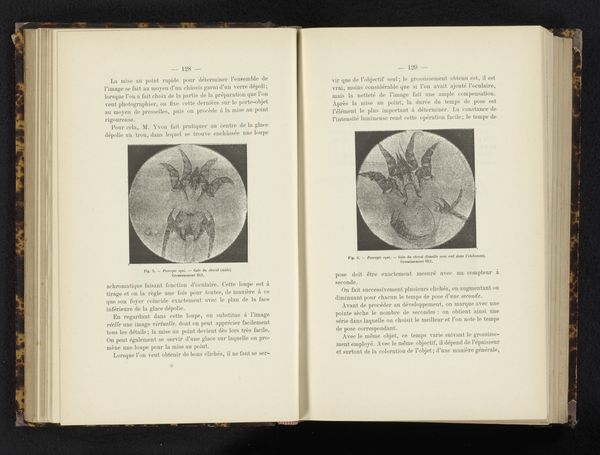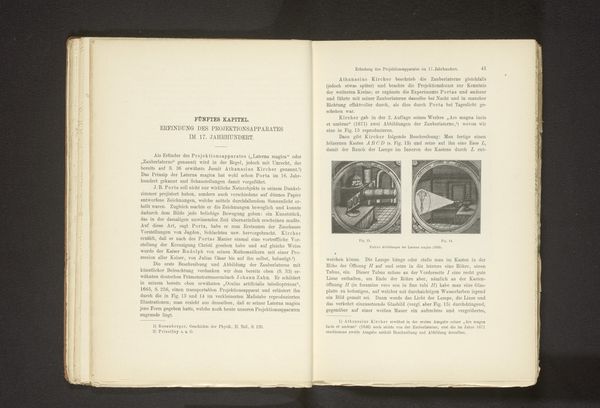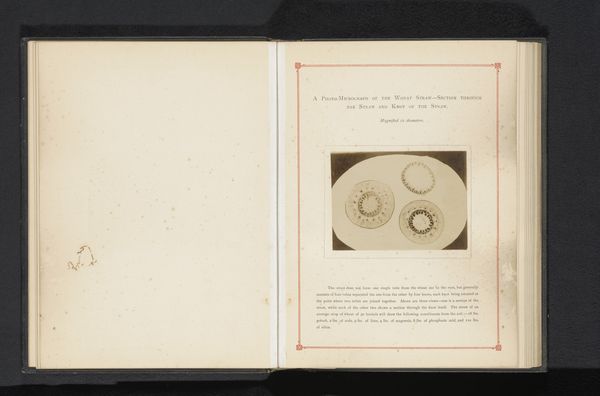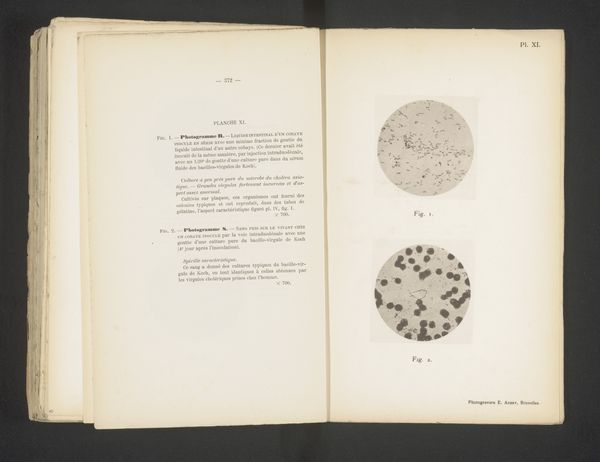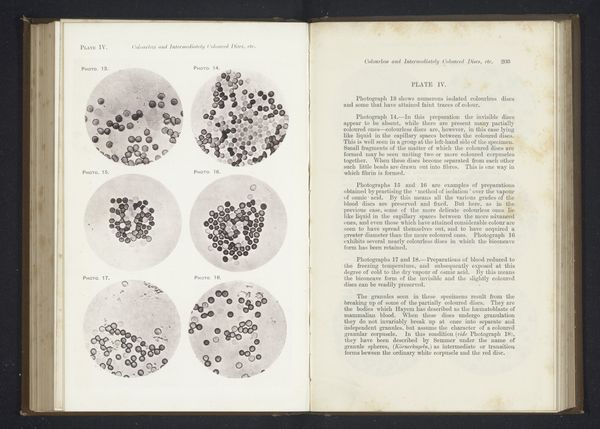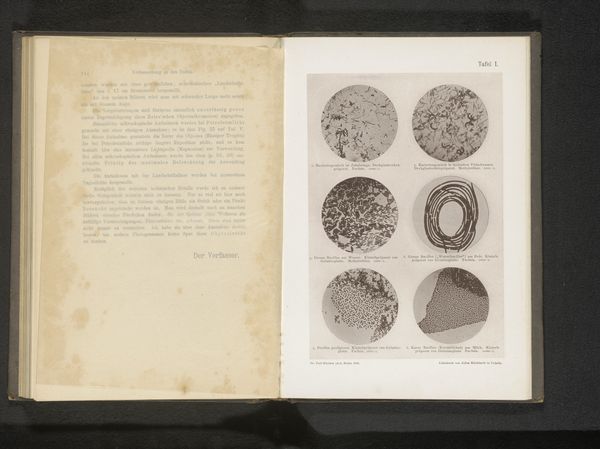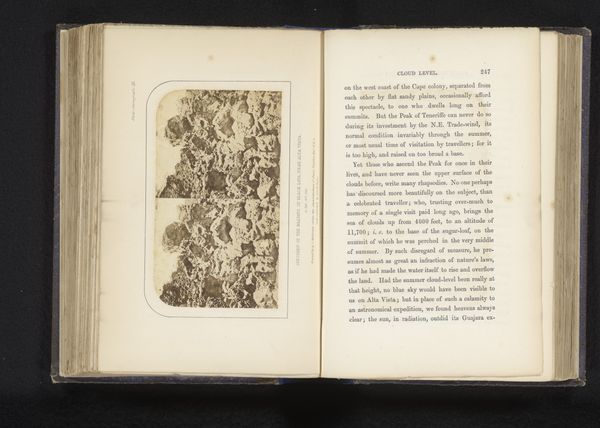
Microscoopopname van kristallen en het bakje met deze kristallen op ware grootte before 1908
0:00
0:00
print, photography
#
still-life-photography
# print
#
photography
Dimensions: height 150 mm, width 98 mm
Copyright: Rijks Museum: Open Domain
Curator: Let's delve into this intriguing print, "Microscoopopname van kristallen en het bakje met deze kristallen op ware grootte," a photograph captured by Arthur E. Smith, sometime before 1908. Editor: My initial feeling? Slightly unsettling. It reminds me of looking up at the night sky through a cheese grater. All these circular, speckled shapes pressing in...a little claustrophobic, but fascinating. Curator: Given the period, it's useful to consider the scientific breakthroughs happening then. Microscopy was radically reshaping our understanding of the microscopic world, influencing everything from medicine to art. Photography like this was inherently linked to imperial and capitalist ventures related to medical and plant-based industries that greatly profited off of exploiting and creating global power structures based in western nations. Editor: Ah, I see what you mean. It is kind of mind-blowing, though, isn't it? Imagine suddenly being able to see this whole universe of things that were always there, right under our noses. A still life image of such small things almost implies an embrace of a whole new understanding of “being.” Curator: Exactly, and it shifted humanity’s ontological relationship to perception by creating new power dynamics through controlling this level of the image, so we’re looking at it not just as art, but through the complex lens of technological and social progress, too. The scientific gaze, if you will. These prints, and all early photography, played a role in what we can now view as exploitation under the guise of information sharing. Editor: I see. I do wonder what those little crystalline characters are up to...maybe they're having tiny crystal parties! Curator: (chuckles) Perhaps! But I find it vital to not detach wonder and imaginative thoughts while dealing with heavier sociopolitical and historical conversations about visual artwork and what it’s trying to do or say. This is especially true for photographic mediums and the topic of scientific revelation! Editor: That’s lovely to keep in mind. I can only wonder, after all this discussion, what early photography of microbes might bring for artwork to explore in the future…it would be just the type of revelation this photo inspired for other artwork.
Comments
No comments
Be the first to comment and join the conversation on the ultimate creative platform.
